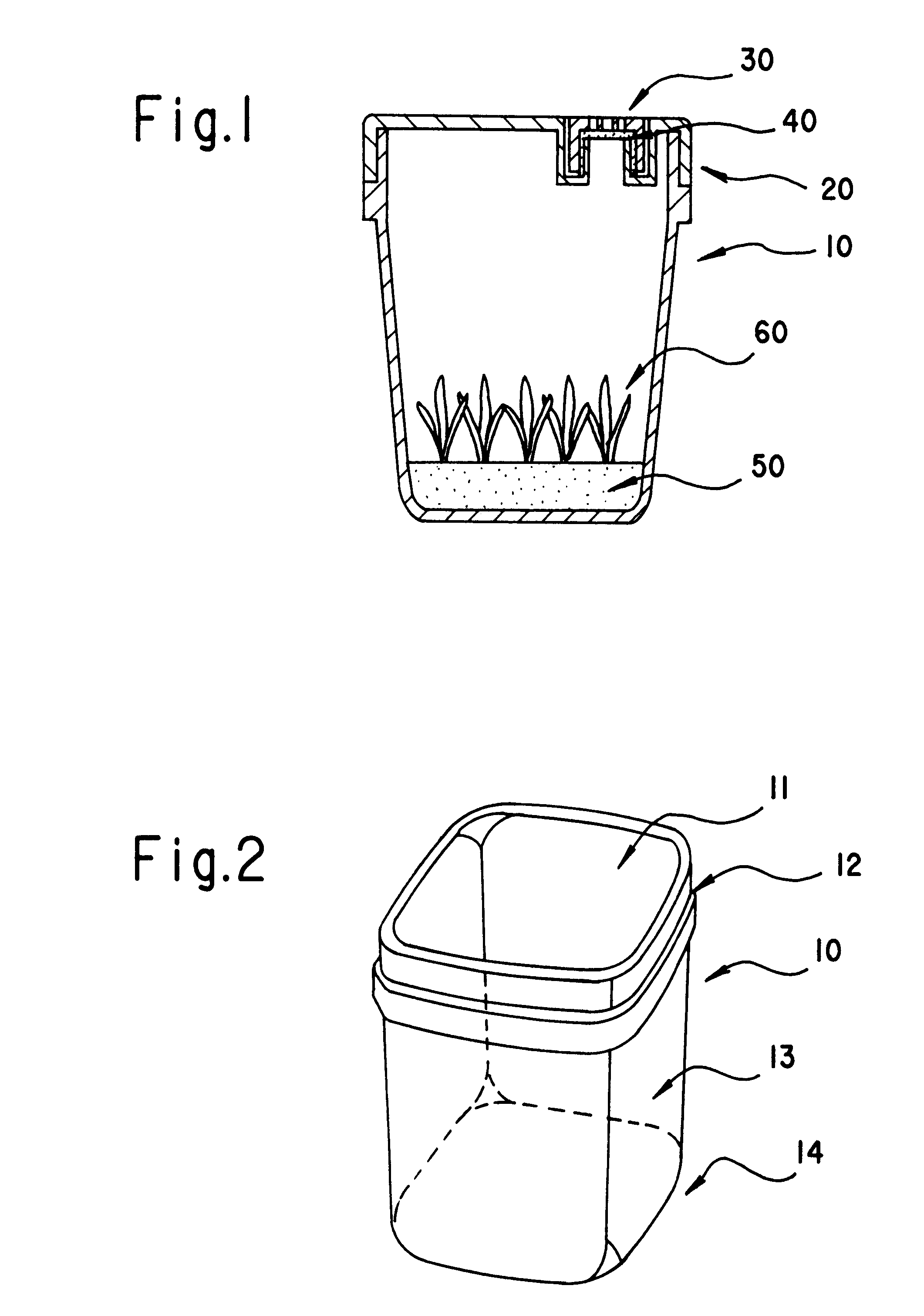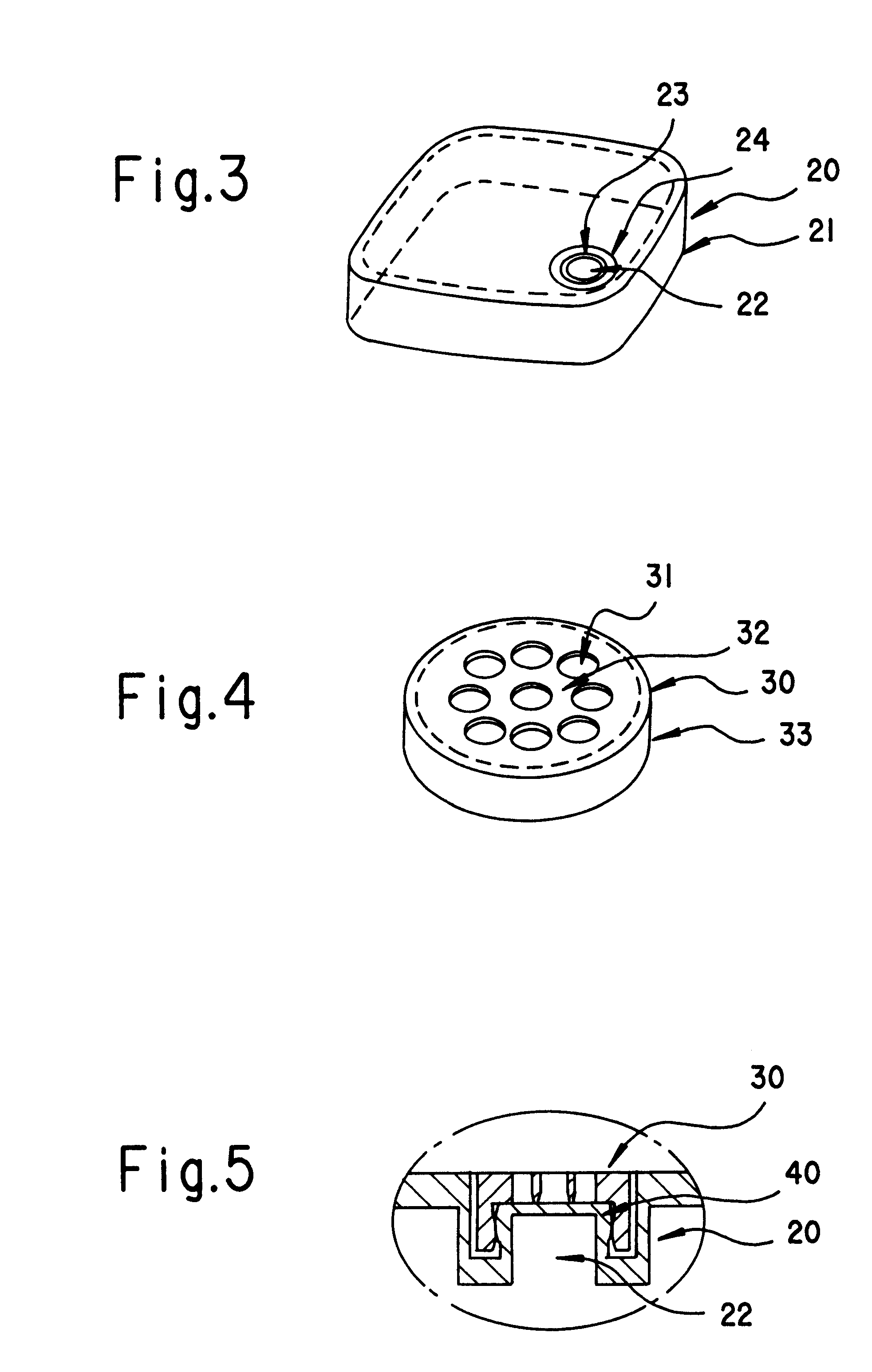Media for the tissue culture of plants and method of culture with the same
a tissue culture and media technology, applied in the field of media for the tissue culture of plants and the same, can solve the problems of difficult moldy admixture, poor intertwining of vermiculite and cellulose fibers, and unsatisfactory cellulose ratio above or below these values, so as to eliminate the time and labor of the step of adding nutrient medium, and improve the effect of us
- Summary
- Abstract
- Description
- Claims
- Application Information
AI Technical Summary
Benefits of technology
Problems solved by technology
Method used
Image
Examples
working example 1
is an example of the production of the plant tissue culture medium by wet molding. One part by weight of LBKP wood pulp with an average fiber length of 1.2 mm was dispersed in 50 parts by weight of water, then 5 parts by weight of baked vermiculite (product of China) of an average particle size of 2 mm was admixed. The slurry so produced was poured onto a 355 .mu.m mesh screen, and the solids were leveled as the water was gravity filtered to obtain a cake. After most of the water was removed, the cake was dried at 90.degree. C., then cut into 50 mm.times.50 mm.times.20 mm cubes. The density of the product so formed after drying was 0.13 g / cm.sup.3.
working example 2
is an example of the production of the plant tissue culture medium by dry compression molding. Nine parts by weight of dried baked vermiculite (product of China) of an average particle diameter of 2 mm was mixed with one part by weight of powdered cellulose fibers of an average fiber length of 300 .mu.m. A sufficient quantity of this admixture was spread into a metal mold to yield a mass per unit area of 0.7 g / cm.sup.2, then pressed at a compressive strength of 50 kg / cm.sup.2 for one minute at room temperature. The molded product so formed was cut into 50 mm.times.50 mm squares. The density of the product so produced was 1 g / cm.sup.3.
In Working Examples 3-12 inclusive, culture medium products were formed by the same method as used in Example 1 and Example 2, but with the particle diameter of the vermiculite and the fiber length of the cellulose being changed in each case as shown in Table 1.
Similarly, in Comparative Examples 1-12 inclusive, the culture medium products were formed by...
working example 15
followed the experiment of Working Example 13 in which the culture medium of Working Example 1 was used. The container was injection molded and of a type as shown in FIGS. 1-5 (bottom face: 70 mm.times.70 mm, opening: 90 mm.times.90 mm, height: 120 mm, thickness: 1.5 mm). The lid, with a 10 mm diameter air hole, had a tight fit with the container. A polypropylene cap was used to secure the porous film and its bottom face was perfectly flush with the film with no gap. An air hole was bored in the cap so as to align perfectly with the air hole in the lid. The following types of porous film were then set in place to form the culture vessel.
Results of sweet potato growth experiments using the culture vessels so produced are shown in Table 3.
PUM
| Property | Measurement | Unit |
|---|---|---|
| fiber length | aaaaa | aaaaa |
| particle diameter | aaaaa | aaaaa |
| density | aaaaa | aaaaa |
Abstract
Description
Claims
Application Information
 Login to View More
Login to View More - R&D
- Intellectual Property
- Life Sciences
- Materials
- Tech Scout
- Unparalleled Data Quality
- Higher Quality Content
- 60% Fewer Hallucinations
Browse by: Latest US Patents, China's latest patents, Technical Efficacy Thesaurus, Application Domain, Technology Topic, Popular Technical Reports.
© 2025 PatSnap. All rights reserved.Legal|Privacy policy|Modern Slavery Act Transparency Statement|Sitemap|About US| Contact US: help@patsnap.com


